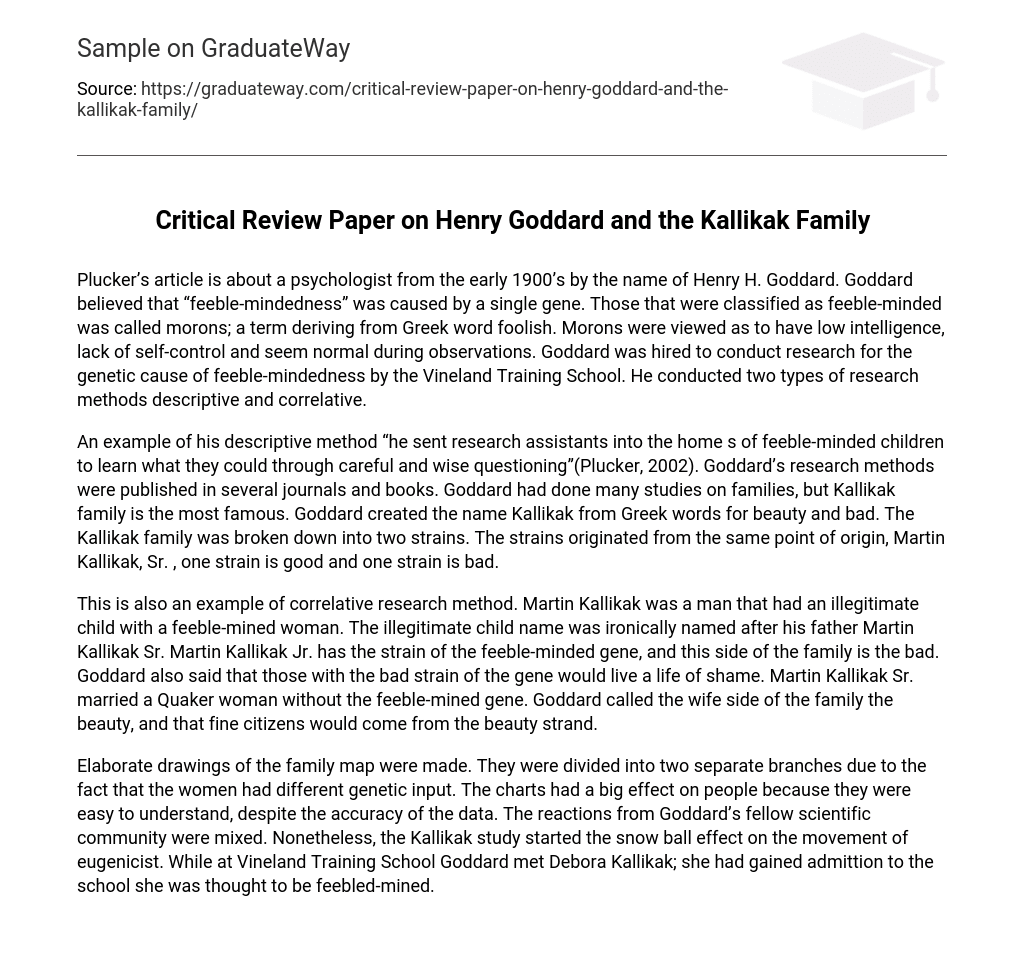Plucker’s article is about a psychologist from the early 1900’s by the name of Henry H. Goddard. Goddard believed that “feeble-mindedness” was caused by a single gene. Those that were classified as feeble-minded was called morons; a term deriving from Greek word foolish. Morons were viewed as to have low intelligence, lack of self-control and seem normal during observations. Goddard was hired to conduct research for the genetic cause of feeble-mindedness by the Vineland Training School. He conducted two types of research methods descriptive and correlative.
An example of his descriptive method “he sent research assistants into the home s of feeble-minded children to learn what they could through careful and wise questioning”(Plucker, 2002). Goddard’s research methods were published in several journals and books. Goddard had done many studies on families, but Kallikak family is the most famous. Goddard created the name Kallikak from Greek words for beauty and bad. The Kallikak family was broken down into two strains. The strains originated from the same point of origin, Martin Kallikak, Sr. , one strain is good and one strain is bad.
This is also an example of correlative research method. Martin Kallikak was a man that had an illegitimate child with a feeble-mined woman. The illegitimate child name was ironically named after his father Martin Kallikak Sr. Martin Kallikak Jr. has the strain of the feeble-minded gene, and this side of the family is the bad. Goddard also said that those with the bad strain of the gene would live a life of shame. Martin Kallikak Sr. married a Quaker woman without the feeble-mined gene. Goddard called the wife side of the family the beauty, and that fine citizens would come from the beauty strand.
Elaborate drawings of the family map were made. They were divided into two separate branches due to the fact that the women had different genetic input. The charts had a big effect on people because they were easy to understand, despite the accuracy of the data. The reactions from Goddard’s fellow scientific community were mixed. Nonetheless, the Kallikak study started the snow ball effect on the movement of eugenicist. While at Vineland Training School Goddard met Debora Kallikak; she had gained admittion to the school she was thought to be feebled-mined.





